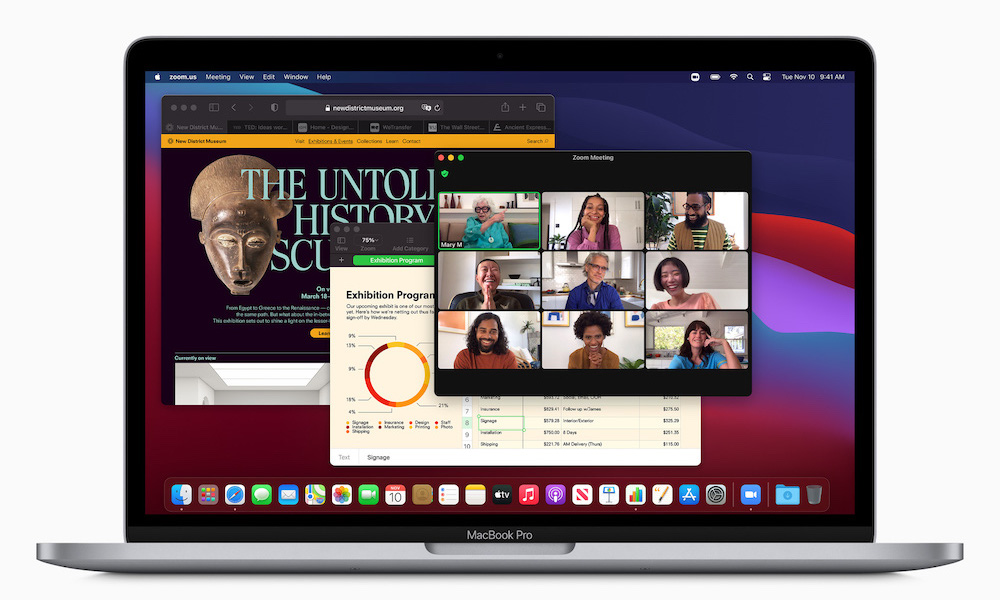These Apps Are Ready for Apple’s M1 Macs (with Some Massive Performance Gains, Too)
 Credit: Apple
Credit: Apple
Toggle Dark Mode
Apple wasn’t kidding when it included a showcase of developers who were excited about Apple’s new M1-equipped Macs, and with the final release of Big Sur landing today and Apple’s M1 MacBooks already shipping to customers, there’s a whole list of developers, big and small, that are already ready for the new world order.
While Apple’s M1 MacBook Air, MacBook Pro, and Mac mini will all still continue to run Intel-based Mac apps without any issues, thanks to Apple’s Rosetta 2 technology, it’s not really clear how much those apps may be hampered by the emulation layer. Apple promises that they should run just as fast, and with the headroom in the M1 chip that’s not hard to believe, but many developers are getting ahead of the game and ensuring that their apps will be ready to take full advantage of the power being unleashed by Apple’s new M1 chip.
In other words, while it’s unlikely your Intel-based apps are going to run any slower on the new ARM-based M1 Macs, they almost certainly won’t as fast as fully native ARM apps would, and for some classes of applications, that’s particularly important.
Right out of the gate, Microsoft has released an update to its Office suite for Mac — Word, Excel, PowerPoint, Outlook, OneNote, and OneDrive — to ensure compatibility with macOS Big Sur and the new M1 Macs, however the public release isn’t yet a “Universal” app delivering native M1 support — it just guarantees that you won’t’ have any compatibility problems.
However, Microsoft also hints in its release notes at exactly what’s going to be happening under Rosetta 2, noting that the first launch of each Office app will take a bit longer due to the need to generate optimized code for the M1. Since this only happens the very first time an Intel app is launched on Big Sur, however, subsequent launches should work much faster.
That doesn’t mean that Microsoft is sitting still on a proper Universal Build, however; with today’s Big Sur update, the company has also released a new version on its Insider Beta channel that will offer full support for Apple Silicon. A release date for this version has yet to be announced, however.
New Apple Silicon Apps
That said, there are a few other developers who are already releasing their full Universal apps — versions that run natively on both Intel and M1-equipped Macs, some of which are boasting some pretty serious performance boosts.
First among these is Algoriddim’s djay Pro AI, a direct update to its Neural Mix Pro that was released last summer as a macOS version of its popular iPad DJ mixing app. The macOS version used Apple’s Core ML frameworks to allow musicians to manipulate and remix tracks in real-time, and with a native M1 version now available, Algoriddim promises a 15 times performance boost over the Intel version, thanks to Apple’s M1 Neural Engine.
Although Apple promised during its One More Thing event that Adobe would be releasing new versions of Lightroom and Photoshop in the next few weeks, rival Serif has beaten Adobe to the punch with new Universal versions of its Affinity Designer, Affinity Photo, and Affinity Publisher suite of apps, “primed” for the new Apple Silicon Macs.
In a statement on its website, Serif notes that the new versions will be able to handle complex documents with thousands of layers much more quickly, thanks to the ability to split processing between the GPU and CPU thanks to the M1’s new unified memory architecture. Serif originally built the new apps using the A12Z hardware in the Developer Transition Kits that Apple made available back in June, allowing it to release the first professional creative applications with M1 support, offering a 3X performance increase on the new MacBook Air.
A handful of other well-known apps have also been updated with universal versions for Apple Silicon, including Omni Group’s OmniFocus, OmniOutliner, OmniPlan, and OmniGraffle, along with Cultured Code’s Things, although as much simpler graphics and productivity apps, users aren’t likely to see nearly as much of a performance boost, although at least they can be guaranteed full compatibility and the best possible user experience on Apple’s newest Macs.






